Read Time: 6 Minutes Subscribe & Share
Q And A
After our post “Chicken Delight – Part 1” went live, we got some intriguing queries from readers. One 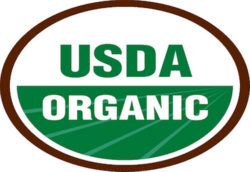 subscriber wrote asking about the forces behind the higher price of organic chickens. It is a multi-faceted issue. Part of it is the cost of raising chickens in a larger space (and it can be indoor or outdoor or both, depending on the Third Party Certification the farmer chooses to follow). And obviously you raise fewer chickens in the space required, and it takes longer for them to mature. In addition, the initial annual fee for a USDA Organic certification costs $750.00 for a small organic
subscriber wrote asking about the forces behind the higher price of organic chickens. It is a multi-faceted issue. Part of it is the cost of raising chickens in a larger space (and it can be indoor or outdoor or both, depending on the Third Party Certification the farmer chooses to follow). And obviously you raise fewer chickens in the space required, and it takes longer for them to mature. In addition, the initial annual fee for a USDA Organic certification costs $750.00 for a small organic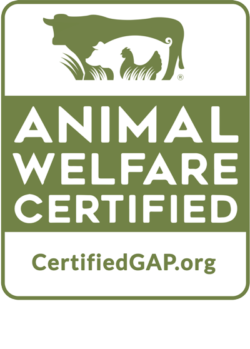 farm, with varying annual fees of about $575.00 to maintain the certification. Other certification labels have annual costs as well. Since a growing number of organic farmers justifiably feel that the USDA Organic label has been corrupted, some have organized into alternative organic certifications such as Real Organic Project, which reflect the original intent of organic farming principles.
farm, with varying annual fees of about $575.00 to maintain the certification. Other certification labels have annual costs as well. Since a growing number of organic farmers justifiably feel that the USDA Organic label has been corrupted, some have organized into alternative organic certifications such as Real Organic Project, which reflect the original intent of organic farming principles. 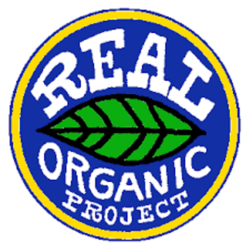
Another is the extra cost and time for obligatory accounting processes, including the registering of receipts from suppliers who themselves have to show that feed, medication, etc. meet third-party organic certifications. Still, it is shocking that less than 4% of the poultry purchased in the US is raised by independent farmers outside of corporate factory farms, and of that percentage, 0.67% is organic.
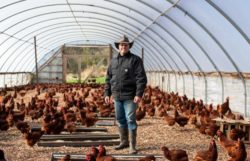 “Sustainably raised” is a catch-phrase for anything that is not “factory farmed” but this doesn’t qualify as a certification. The term ” pasture raised” is a bit wobbly too. In some cases, the poultry farmer did not want to pay the expense of organic certification but wanted to follow some of the intentions of organic, regenerative or biodynamic farming. There exist some third-party certifications outside of recognized organic ones, such as Food Alliance Certified Animal Welfare Approved, and Certified Humane Raised And Handled, and each entails annual fees. Perhaps the most famous uncertified farming venture that meets many organic criteria is Polyface Farms, whose owner, Joel Salatin, proudly ignores all certifications in his mission statement.
“Sustainably raised” is a catch-phrase for anything that is not “factory farmed” but this doesn’t qualify as a certification. The term ” pasture raised” is a bit wobbly too. In some cases, the poultry farmer did not want to pay the expense of organic certification but wanted to follow some of the intentions of organic, regenerative or biodynamic farming. There exist some third-party certifications outside of recognized organic ones, such as Food Alliance Certified Animal Welfare Approved, and Certified Humane Raised And Handled, and each entails annual fees. Perhaps the most famous uncertified farming venture that meets many organic criteria is Polyface Farms, whose owner, Joel Salatin, proudly ignores all certifications in his mission statement.
What Tastes Good
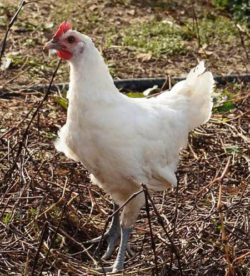 And what about a tasty chicken? Another question we received was “Why do our organic chickens not taste as good as ones purchased in Europe?” Part of the answer is that we’ve been raised with different expectations. The purchaser in the US was groomed earlier in the 20th century by the A&P -USDA program, with its competition to create a large but inexpensive bird. European poultry-raising standards and consumer expectations are geared toward taste and texture. Here, it had to be large and it had to be cheap, and these were the goals of both state and federal contests that were held to produce the “Chicken Of Tomorrow”. In France, Poulet De Bresse is a sought-after treat not only by Michelin restaurants, but by families as well. In Italy, the Padovana Chicken is revered for its delicate taste and its
And what about a tasty chicken? Another question we received was “Why do our organic chickens not taste as good as ones purchased in Europe?” Part of the answer is that we’ve been raised with different expectations. The purchaser in the US was groomed earlier in the 20th century by the A&P -USDA program, with its competition to create a large but inexpensive bird. European poultry-raising standards and consumer expectations are geared toward taste and texture. Here, it had to be large and it had to be cheap, and these were the goals of both state and federal contests that were held to produce the “Chicken Of Tomorrow”. In France, Poulet De Bresse is a sought-after treat not only by Michelin restaurants, but by families as well. In Italy, the Padovana Chicken is revered for its delicate taste and its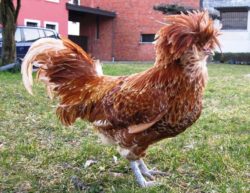 prowess as an egg producer. While I buy from Polyface, Farmer Focus, Bell & Evans, and White Oak Pastures and am happy that they are available and all have raised the bar, I have to agree with those who wrote to me — chickens in Italy and France are yummier. Organic here is better than conventional, but still not up to the European mark.
prowess as an egg producer. While I buy from Polyface, Farmer Focus, Bell & Evans, and White Oak Pastures and am happy that they are available and all have raised the bar, I have to agree with those who wrote to me — chickens in Italy and France are yummier. Organic here is better than conventional, but still not up to the European mark.
Part of that equation is that in the US, we equate value with size, even in the organic arena. As consumers, we don’t necessarily consider taste as important as size when we shop for protein or produce. In the case of a chicken, it is almost impossible in the US to find a sustainably raised or organic chicken under 3 pounds. I mostly see them over 4.5 pounds. And that bulking up of the bird decreases the taste from my experience, particularly in breast meat. The laws in the EU are much more stringent (USDA regulations have been extensively compromised by food corporations). It takes longer to raise a fowl – and there are standards for taste in many provinces of EU countries that we do not have here. Their flavor and texture is enhanced by slower growth, by exercising their predatory proclivities and consuming insects, by eating seeds instead of just a corn-based feed, and by gleaning old fruit. Plus, they exercise more. All these factors play into a better tasting roast chicken demanded by a more quality-driven population. TruLocal, a Canadian grocery site with an interesting blog, states the obvious: until you have a population that has greater expectations for the quality and taste of their food purchases, suppliers are content to meet a lower bar.
So What Do I Buy
Another reader asked what brands to look for that avoid the taint of factory farming and satisfy at least some of the tenets of sustainable poultry raising. I discovered a very helpful guide from the website of the Cornucopia Institute, a pretty tough non-profit with an admirably ambitious mission statement.
The Cornucopia Institute is a non-profit consumer education and watchdog organization. We research brands and investigate the industry to identify and elevate authentic organic foods and farmers, while we scrutinize the USDA National Organic Program’s enforcement and application of the organic law. Our donors provide us with the resources and the moral authority to strengthen the good food movement. Whether you’re a consumer, a farmer, or a change maker, your actions propel our work.
They create score cards in which their teams investigate (and back up their work scientifically) products — from cottage cheese to poultry. The organization names producers, and reveals how they respond (or not) to the questionnaires and investigations. In the poultry division, a local-to-me poultry brand, Farmer Focus, got a high score, as did the nationally recognized brand Bell & Evans. Interesting for me was that the highest rated brands are not available to me in any of my local grocery haunts.
Price Of Working Conditions
 A couple of queries brought up an issue none of us like to think about as we are grabbing chicken wings and Caesar Salad makings – the working conditions of the people behind the food. It was quite shocking to me what the laborers behind our standard food purchases have to endure. The inhuman grind that occurs in the factory farms of Tyson, Perdue, Pilgrim Pride and JBS is pretty well documented. We just don’t like to read about their abuses and their power to corrupt state and federal regulations. Since the percentage of organic chicken farming is so small, there really aren’t many statistics available about their working conditions. Many of them are run by individual families rather than corporations. The benefit of working in fields or livestock pens that are not filled with poisonous chemicals is certainly obvious. Pay scales and access to medical benefits have been difficult to quantify…so far. An interesting example is set by Polyface Farms, which states that their salaries are based on commissions. While many organic alliances have not taken a strong position on workers’ rights and conditions, the Regenerative Organic Alliance is one that has made fair farm labor practices one of its three tenets. The now famous Apricot Lane Farm is one of their members.
A couple of queries brought up an issue none of us like to think about as we are grabbing chicken wings and Caesar Salad makings – the working conditions of the people behind the food. It was quite shocking to me what the laborers behind our standard food purchases have to endure. The inhuman grind that occurs in the factory farms of Tyson, Perdue, Pilgrim Pride and JBS is pretty well documented. We just don’t like to read about their abuses and their power to corrupt state and federal regulations. Since the percentage of organic chicken farming is so small, there really aren’t many statistics available about their working conditions. Many of them are run by individual families rather than corporations. The benefit of working in fields or livestock pens that are not filled with poisonous chemicals is certainly obvious. Pay scales and access to medical benefits have been difficult to quantify…so far. An interesting example is set by Polyface Farms, which states that their salaries are based on commissions. While many organic alliances have not taken a strong position on workers’ rights and conditions, the Regenerative Organic Alliance is one that has made fair farm labor practices one of its three tenets. The now famous Apricot Lane Farm is one of their members.

Kitchen Detail shares under the radar recipes, explores the art of cooking, the stories behind food, and the tools that bring it all together, while uncovering the social, political, and environmental truths that shape our culinary world.




Comments are closed here.
Follow this link to create a Kitchen Detail account so that you can leave comments!